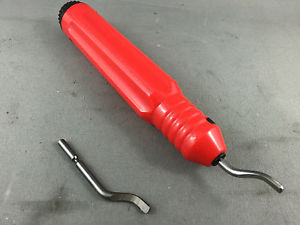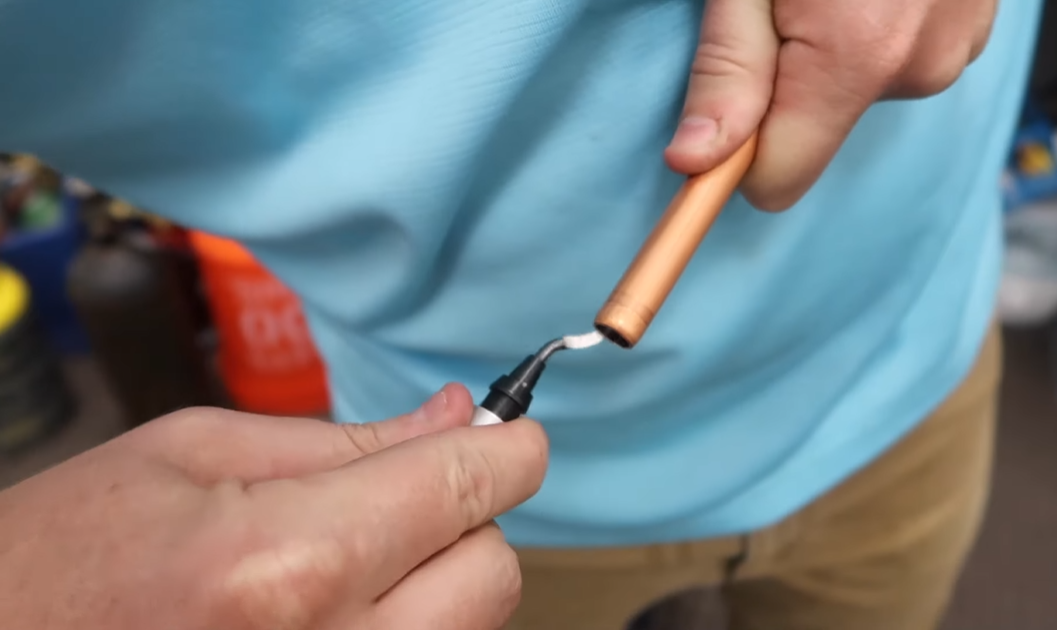Get Tech Tips
Subscribe to free tech tips.
Properly Deburring (Reaming)

Deburring copper tubing (often called reaming) is the practice of running a blade around the inside of tubing after you cut it to remove the burr edge from the inside.
It's an important practice and should be performed whenever possible. Deburring reduces turbulence inside the lines, as burrs can cause turbulence. HOWEVER…
YOU MUST MAKE SURE THE SHAVINGS DON'T FALL INTO THE LINE!
Whenever possible, point the open end down while you run the blade around the inner edge. Then, tap the line to ensure that the shavings fall out of the line rather than into it. In some situations during repairs, it may make sense to purge nitrogen out the line you are deburring, especially in repair situations, like replacing a compressor, where making the lines point downward may be impossible.

If you are in a situation where you must choose between deburring and possibly dropping shavings into the system, I would rather you didn't deburr.
In the case of making flare connections, deburring is critical. I elaborate on that point further in THIS video showing how to make ductless flares that won't leak. For a flared tube, it is also vital that you don't over-ream the tube and thin out the copper edge. Otherwise, it will be prone to cracking.
In summary…
Deburring is important, but keeping shavings out of the system is even more important.
—Bryan
P.S. – Letting burrs or copper shavings fall into the line set is one of the worst practices I mentioned on my live stream about the top 5 install mistakes that kill systems. You can watch that old stream HERE.











Comments
This is the quickest and best deburring device I have found for copper or steel tubing. The bits are easy to use with hand drills with size used depending on the size of tubing. https://www.amazon.com/Tutu-tools-Countersink-Titanium-Deburring/dp/B09FQDZ5HQ/ref=sr_1_14?crid=24RJX8OMN4FX2&keywords=machinist+countersink+bit&qid=1659490294&sprefix=machinist+countersink+bi%2Caps%2C1061&sr=8-14
This is the quickest and best deburring device I have found for copper or steel tubing. The bits are easy to use with hand drills with size used depending on the size of tubing. https://www.amazon.com/Tutu-tools-Countersink-Titanium-Deburring/dp/B09FQDZ5HQ/ref=sr_1_14?crid=24RJX8OMN4FX2&keywords=machinist+countersink+bit&qid=1659490294&sprefix=machinist+countersink+bi%2Caps%2C1061&sr=8-14
I recently had an AC installed and the installer use a pair of tin-snips stuck into the end of the copper pipe to de-burr. While I initially was concerned — I’ve de-burred a lot of copper tubing using “industry approved” de-burring tools. When I thought about what he did by flatting the burr against the inside wall, the singular question became will be burr be now a rounded edge, or will it possibly break off and circulate through the system. Interested in what other may think.
I recently had an AC installed and the installer use a pair of tin-snips stuck into the end of the copper pipe to de-burr. While I initially was concerned — I’ve de-burred a lot of copper tubing using “industry approved” de-burring tools. When I thought about what he did by flatting the burr against the inside wall, the singular question became will be burr be now a rounded edge, or will it possibly break off and circulate through the system. Interested in what other may think.
To leave a comment, you need to log in.
Log In